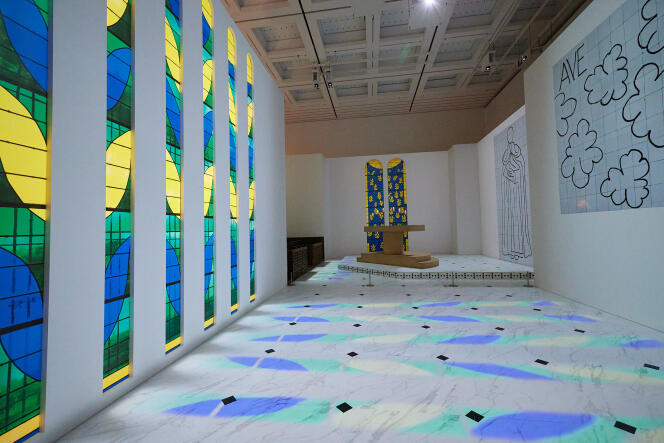
French painter and sculptor Henri Matisse (1869-1954) never visited Japan, but his work is widely celebrated there. This is demonstrated by the major exhibition on view until May 27 at the National Art Center (NACT), in the Roppongi neighborhood in the heart of Tokyo. With 150 works grouped together over almost 3,000 square meters under the title "Forms in Freedom," the museum offers a global vision of the work of the French painter.
"The idea was to offer an ensemble whose sense culminates in the large cut-out gouache Fleurs et Fruits ["Flowers and Fruits"], shown for the first time in Japan, and to observe Matisse's evolution from small formats to a painting that moves out of the frame and into decoration," said Claudine Grammont, head of the graphic art office at the Centre Pompidou, Paris, and formerly head of the Musée Matisse in Nice, from where almost all the works on show originate.
The exhibition, originally scheduled for 2021 but postponed due to the Covid-19 pandemic, takes visitors from the artist's first painting, Nature morte aux livres ("Still Life with Books"), done in 1890 at the age of 21, to the chapel in Vence (southeastern France), for which Matisse designed the interior decoration, reproduced here life-size, with a skillful play of light reenacting the sun's path through the stained-glass windows.

In between, visitors can enjoy a number of Fauvist works, sculptures and costumes created in 1919 for Igor Stravinsky's Le Chant du rossignol ("The Song of the Nightingale") performed by Serge Diaghilev's Ballets Russes. The exhibition also features a number of cut-out gouaches, such as Nu bleu IV (Blue Nude IV"), from 1952.
Japanese collectors
The event is an opportunity to recall the painter's links with the Archipelago. "Matisse didn't follow the fashion for Japonisme, like [Vincent] Van Gogh, but he was interested in Japanese painting and culture," observed Naoki Yoneda, curator of the NACT and a specialist in 20th-century French painting. La Japonaise au bord de l'eau ("Japanese Woman Beside the Water"), a 1905 painting, remains at the Metropolitan Museum of Art in New York. But the NACT exhibition includes Masque japonais ("Japanese Mask") a cut-out gouache from 1950.
This contact with the Japanese archipelago dates back to the early days of the painter's fame, when, in the 1910s, he met the scholar Okakura Kakuzō (1863-1913), one of the great promoters of Japanese culture abroad and the author in 1906 of The Book of Tea. Japanese collectors, such as Shigetaro Fukushima (1895-1960), who lived in Paris from 1923 to 1933, acquired many of his works.
You have 42.98% of this article left to read. The rest is for subscribers only.